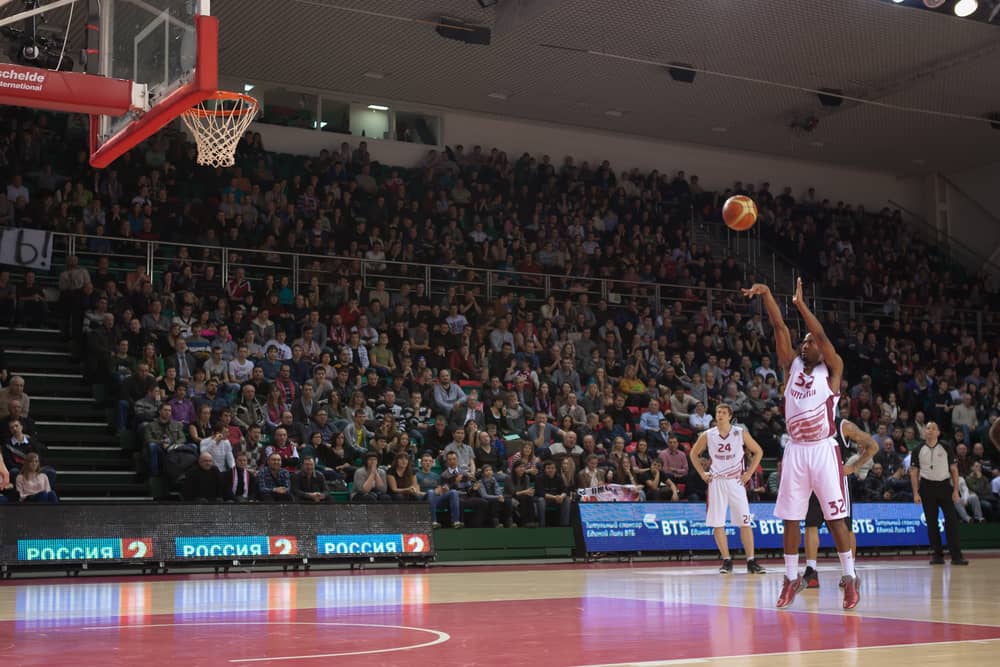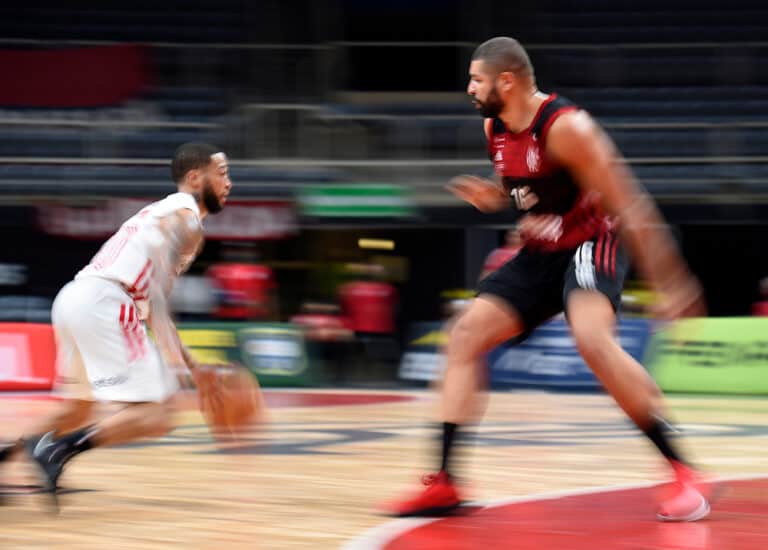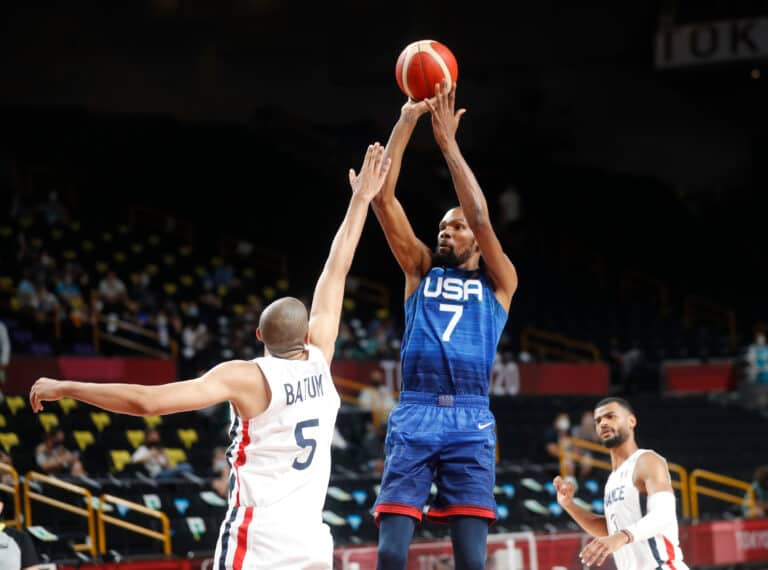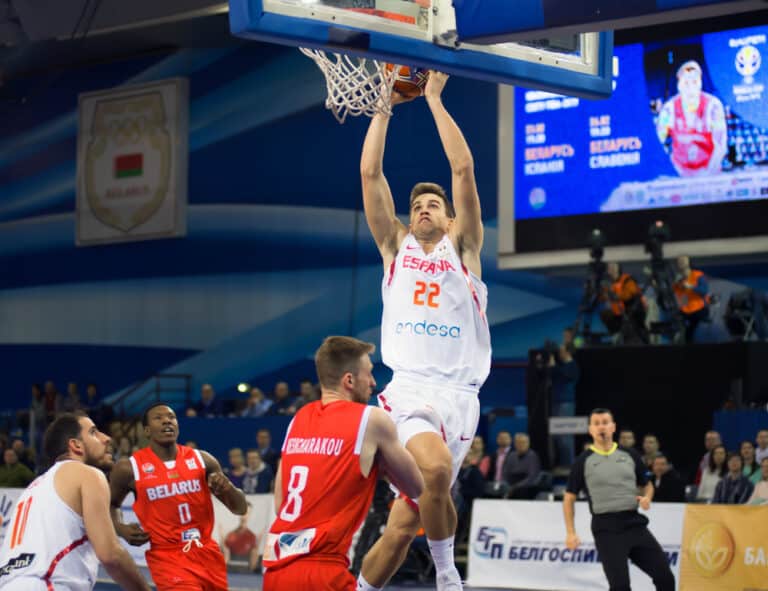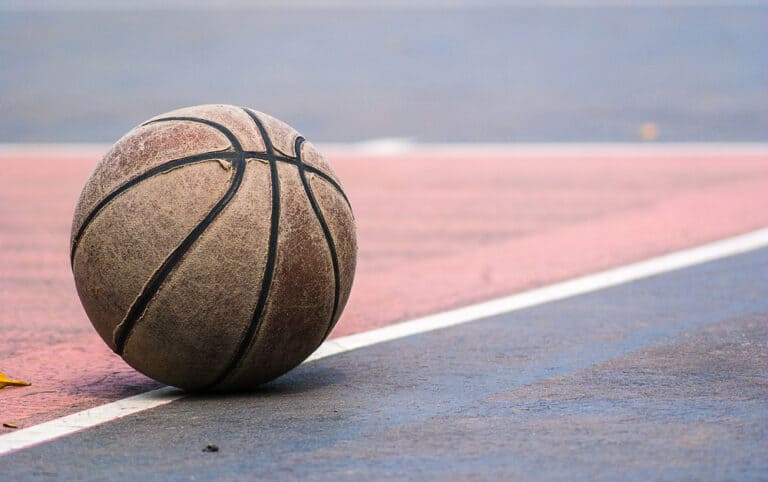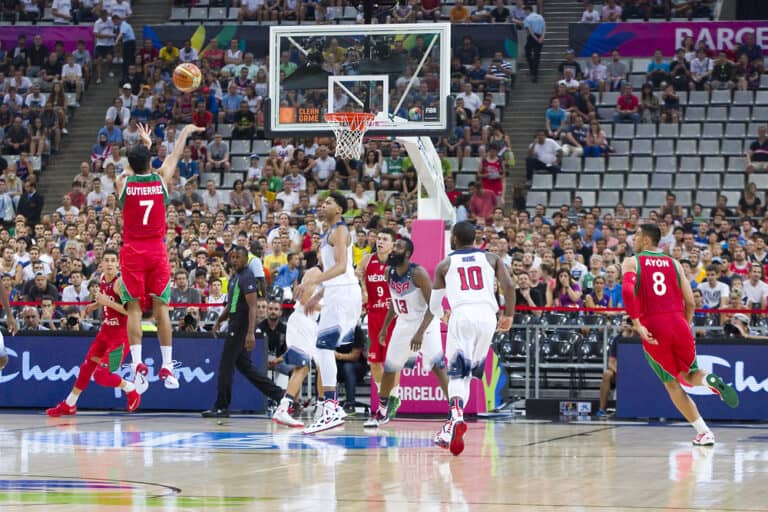How Far Is The NBA Free Throw Line? (Find Out Here)
Editorial credit: Pavel Shchegolev / Shutterstock.com
In 1987 Michael Jordan wowed the crowd by taking off from just inside the free-throw line to perform a slam dunk. It is his most iconic moment. The man hung in the air as if suspended on a wire. However, it was not the first time he pulled the stunt. In 1985, in a slam dunk contest in Indianapolis, he did it with his foot behind the line. It wasn’t as pretty, but he cleared the full fifteen feet.
The NBA free throw line is 15 feet from the backboard. It is the same distance for the NCAA, WNBA, high school, and junior high basketball. Only the FIBA has it further, at 15.09 feet. The size of the key in the NBA and WNBA is 16 feet wide, 12 feet in NCAA, and below. FIBA’s is 16.09 feet.
The free throw line is pretty standard in basketball, despite three-point lines and overall court dimensions varying. The only outliner is the FIBA (Federation Internationale de Basketball Amateur). Until 2010 they also played with a trapezoid-shaped key instead of a rectangle. However, since NBA players entered the Olympics in 1992, there has been pressure for FIBA to move closer to NBA ball.
Distance Between The NBA Free Throw Line And Backboard?
The NBA free throw line is 15 feet from the line under the backboard. Almost all US basketball uses this distance, from a junior high level and up. FIBA is the only outliner, measuring 15.09 feet from the backboard.
Why Is FIBA’s Free Throw Line Different From The NBA?
FIBA’s free throw line differs from the NBA’s due to the metric system. The free throw line in the US imperial system works out perfectly to a cool 15 feet. However, that figure converts into 4.572 meters, which is messy. Thus, FIBA made it a tidy 4.6 meters.
Is The NBA Free Throw Line Different To High School?
The NBA free throw line is the same distance (15 feet) at almost every level of US basketball. However, the width of the line does change. At high school and NCAA, it is only 12 feet wide, rather than the 16 feet used at NBA and WNBA. This also makes the high school key narrower.
Distance From The NBA Free Throw Line And Rim?
The rim edge to the free throw line is about 13 feet. The NBA free throw line is measured from the backboard, not the edge of the rim. There are 6 inches between the backboard and the back of the hoop, with the rim having an 18-inch diameter. Thus, the edge of the rim is 2 feet closer to the free-throw line than the backyard.
Distance From The NBA Free Throw Line And Edge Of The Court?
There are 19 feet between the free-throw line and the edge of the court. It is the same in the lower levels of basketball, including high school and junior high.
The reduction of the courts is taken from the distance between the free throw line and the middle line. You also lose total court width. But the free throw line and the key length remain the same.
How Do You Measure A Free Throw Line At Home?
To measure a free throw line at home:
- Climb a ladder and hold the top of a tape measure directly below the backboard.
- Have a friend bring the tape measure down to the ground and mark it
- Climb down and hold the top of the tape measure at the mark
- Have a friend bring the tape measure fifteen feet away and mark your new free throw line
Who Are The NBA’s Best Free Throw Shooters?
Karl “The Mailman” Malone scored 9,787 free throws during his NBA career, with a 74.20%. He has the record for career free throws in the NBA.
However, Stephen Curry and Jordan Poole are neck to neck for the best free throw percentage. Both have achieved over 92% accuracy in an NBA season.
Does The NBA Allow “Granny Shots” For Free Throws?
The NBA does allow players to perform an underhand free throw, popularly known as the granny shot.
Who Are The NBA’s Most Famous Granny Shot Players?
NBA Hall of Famer Rick Barry was known for his granny-shot free throw. His son, Canyon, also uses the style. He retired with an 89.3% free throw average throughout his fourteen NBA seasons. In 1966 he temporarily held the NBA record for most free throws made in a single quarter. However, Vince Carter broke the record in 2005.
Wilt “Big Dipper” Chamberlain is another famous granny shot shooter. For his 1961-62 season, he averaged over 50 points a game. On March 2, 1962, he scored 100 points in a single game, and 28 of those points were free throws. So how did the notoriously bad free throw shooter make all but four of his attempts that game? Granny shots.
Unfortunately, despite the granny shot rocketing Chamberlain into the best year of his career, he abandoned the style and returned to being an abysmal foul shooter. When Malcolm Gladwell tracked him down in 2017 to ask why he made such a baffling choice, Chamberlain said, “I felt silly, like a sissy, shooting underhanded.”
Is The Granny Shot The Most Accurate Free Throw Style?
According to physics, a Granny shot is the most accurate way to make a show from the foul line. In 2008, Discovery Magazine talked to Professor Peter Brancazio at Brooklyn College. Brancazio is a physicist that loves sports science. He told the magazine that the overhand style is so inaccurate due to “the sharp angle,” thus, “there ends up being a much smaller window for the ball to go in.”
Yet, the style remains unpopular, most down to peer pressure and jeering.
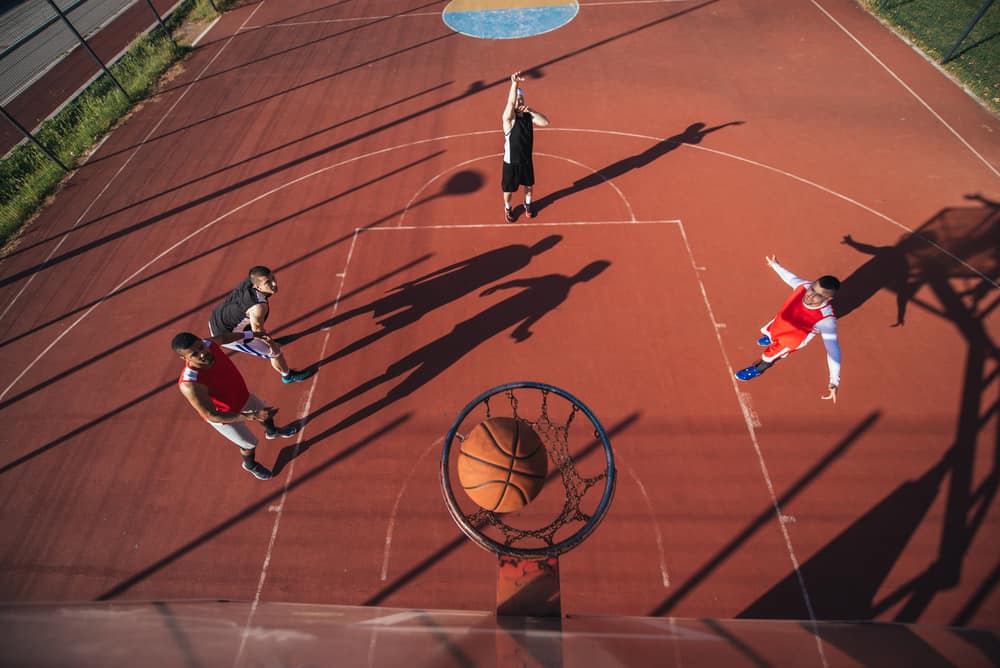
Conclusion
The NBA free throw line is 15 feet from the backboard, as it is for most US basketball. The only major exception is FIBA, which is marginally further. The most accurate way to sink a ball from the foul line is executing a granny shot, Rick Barry style. Unfortunately, most basketball players, NBA or otherwise, give this method a miss. It seems we’d rather forgo points than look “silly,” which is a shame.
References
- https://www.stack.com/a/basketball-court-dimensions/
- https://official.nba.com/rule-no-1-court-dimensions-equipment/
- https://www.youtube.com/watch?v=Ifh-ZndgQyQ
- https://www.youtube.com/watch?v=2hQnEXtpl6Y
- https://olympic.ca/2019/05/24/what-is-the-difference-between-nba-and-fiba-basketball-rules/
- https://www.britannica.com/story/why-are-basketball-hoops-10-feet-high

